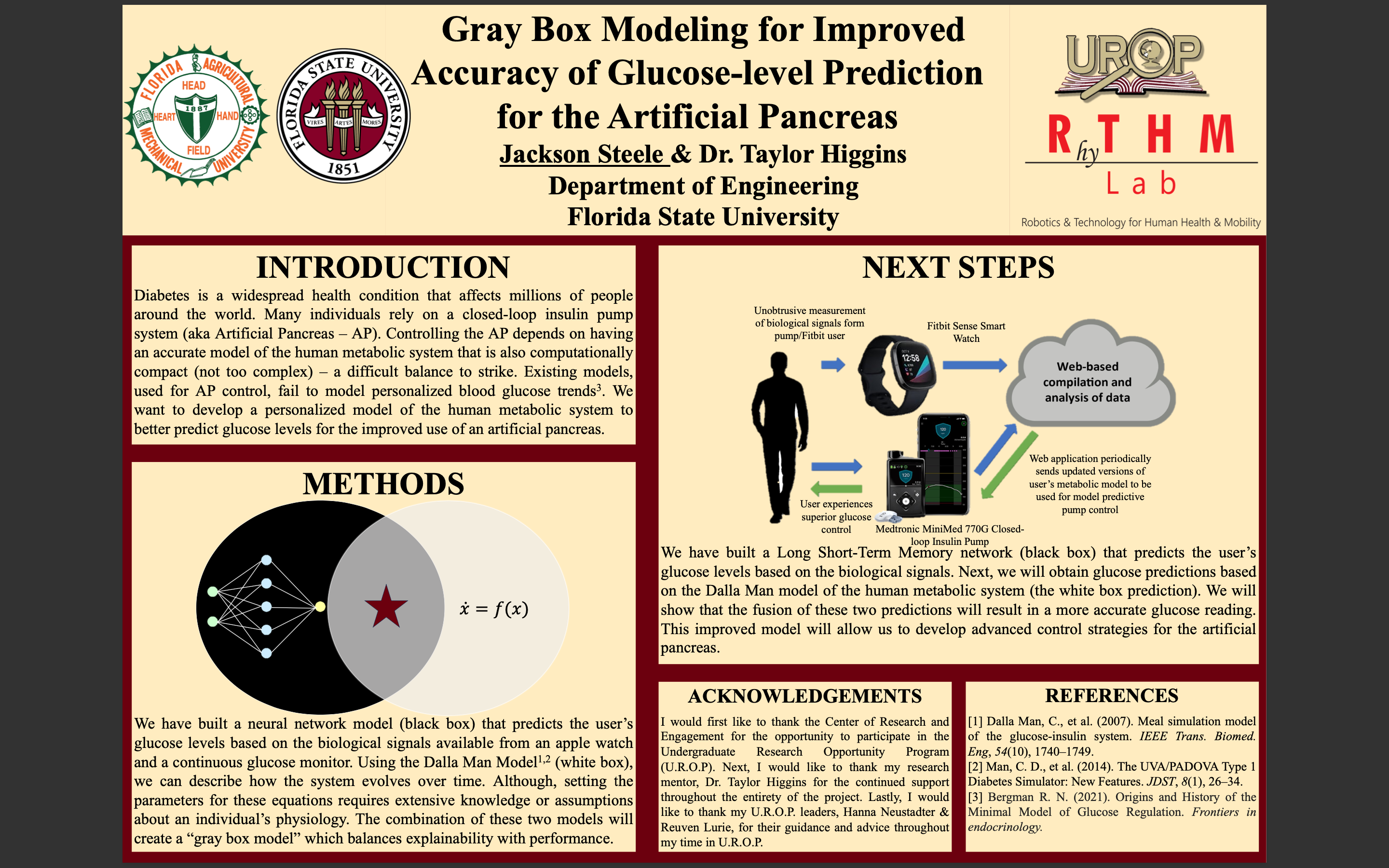Research Symposium
24th annual Undergraduate Research Symposium, April 3, 2024
Jackson Steele Poster Session 2: 10:45 am - 11:45 am/140

BIO
Jackson Steele, originally from Chicago, Illinois, is a driven second-year undergraduate student majoring in Interdisciplinary Medical Sciences Clinical Professions. His research endeavors are focused on enhancing the precision of glucose level predictions for artificial pancreas systems, a project he's passionately pursuing through the Undergraduate Research Opportunity Program. With a keen interest in the intersection of technology and medicine, Jackson has sharpened his coding and analytical skills in Dr. Higgins' lab at the College of Engineering. Beyond his academic pursuits, Jackson actively participates in the Phi Delta Epsilon Premedical Fraternity, Alpha Epsilon Delta Pre-Health Honor Society, Make Medicine Human, and engages in intramural sports.
Gray Box Modeling for Improved Accuracy of Glucose-level Prediction for the Artificial Pancreas
Authors: Jackson Steele, Taylor HigginsStudent Major: Interdisciplinary Medical Sciences Clinical Professions
Mentor: Taylor Higgins
Mentor's Department: Engineering Mentor's College: Notre Dame Co-Presenters:
Abstract
Gray box modeling is a combination of an analytical model (white box) with some form of machine learning (black box). In this project, we aim to leverage this modeling technique to better predict glucose levels in individuals with diabetes. Analytical (white box) models are differential equations that describe how a system evolves over time, but setting the parameters for these equations requires extensive knowledge or assumptions about an individual’s physiology. Machine learning (black box) strategies can produce patient-specific models, but often require onerous amounts of training data and lack safety guarantees when used for control purposes. Gray box modeling may allow us to mitigate the pitfalls yet leverage the benefits of both forms of modeling. We have built a neural network model (black box) that predicts the user’s glucose levels based on the biological signals available from an apple watch and a continuous glucose monitor. Next, we will obtain glucose predictions from a Diabetes Mellitus Metabolic Simulator (DMMS.R) [1] which relies on the Dalla Man model [2] of the human metabolic system (the white box prediction). We are hoping that the fusion of these two glucose-level predictions will result in more accurate predictions of glucose levels. This improved model will allow us to develop advanced control strategies for the artificial pancreas.
Keywords: Gray Box Modeling


